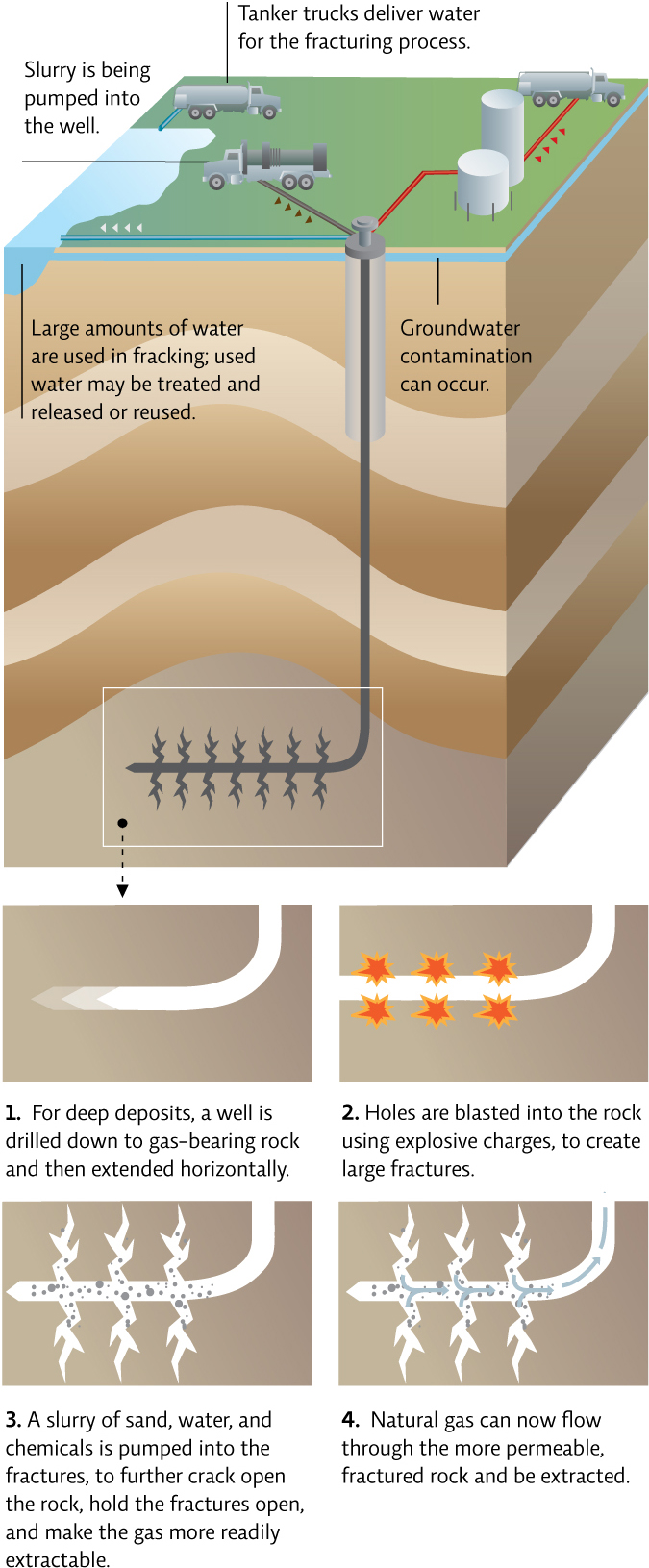20.6 Natural gas is another conventional energy resource.
Natural gas (predominately methane) is an important alternative to oil for some purposes, like generating electricity and heat. Like oil, natural gas reserves are finite. (See Infographic 20.4)
The extracting and processing methods for natural gas and oil are very similar. Natural gas sometimes flows freely up wells due to underground pressure, but most natural gas extraction requires some kind of pumping system to force the gas upward. Natural gas also contains impurities and must be refined before it can be used. However, it is considered the cleanest fossil fuel because it releases much less of the greenhouse gas, carbon dioxide, and other air pollutants than oil or coal does when burned.
As conventional oil and gas reserves shrink, energy companies are looking for alternatives. One increasingly targeted type of fossil fuel reserve is deep natural gas held in shale rock formations. However, some environmental organizations have raised concerns about the safety of the extraction process used to access these reserves. For instance, to help release natural gas from the ground after drilling, fluids containing toxic chemicals are injected underground at high pressure in a process known as hydraulic fracturing or “fracking.” An estimated 30 to 70% of this liquid resurfaces with the natural gas, bringing the toxic chemicals along with it. These chemicals have the potential to contaminate ground and drinking water, soil, and air. Methane itself may also contaminate groundwater near these wells. Though areas with methane deposits may normally have some methane in the groundwater, fracking may increase the amount. [infographic 20.9]

363
364